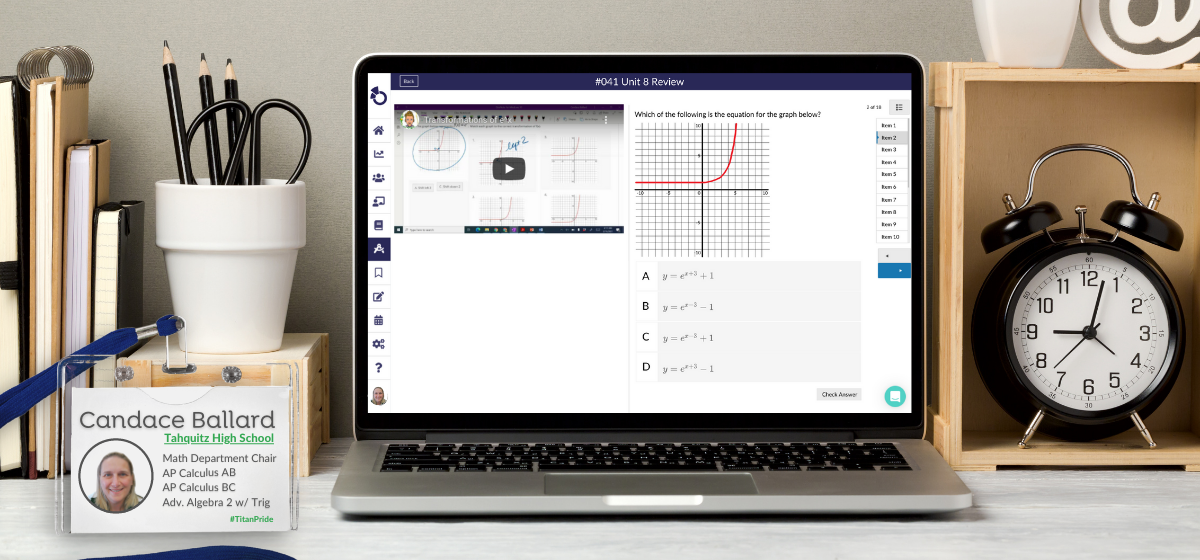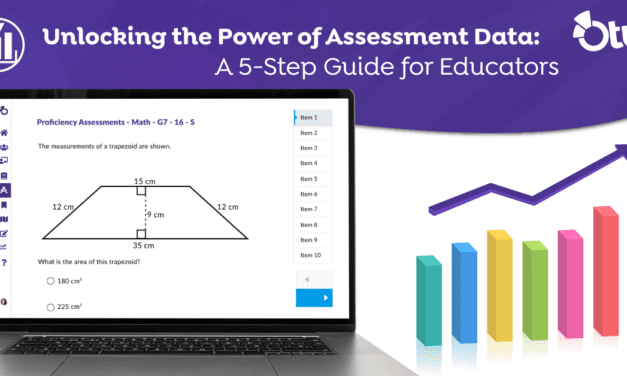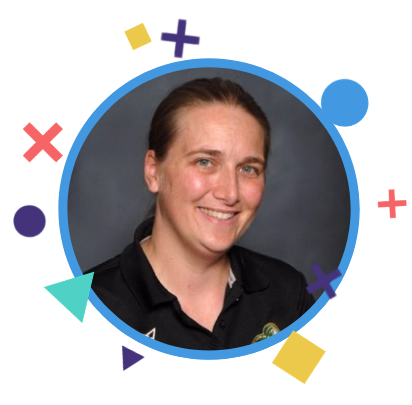
Math as a core subject, and especially in high school, is very complex. As someone who barely made it through Trig, learning how Candace (Candi) Ballard and her team at Tahquitz High School assess students against a sea of math standards is eye-opening. Speaking with Candi really showed how the approach to teaching math has changed since 1999. While I had amazing teachers in high school, retaining complex math equations and concepts was incredibly difficult.
Meet Candi
Candi is the Math Department Chair, technology lead, and wearer-of-many-hats at Tahquitz High School in Hemet, California. A veteran teacher of 21 years, Candi teaches AP Calculus and Algebra II with Trigonometry. Outside of work, she has an even busier life with four children from ages 2-13. Two of her children dance, though she is quick to laugh and share she “is not one of those dance moms.”
The Approach to K-12 Common Assessments
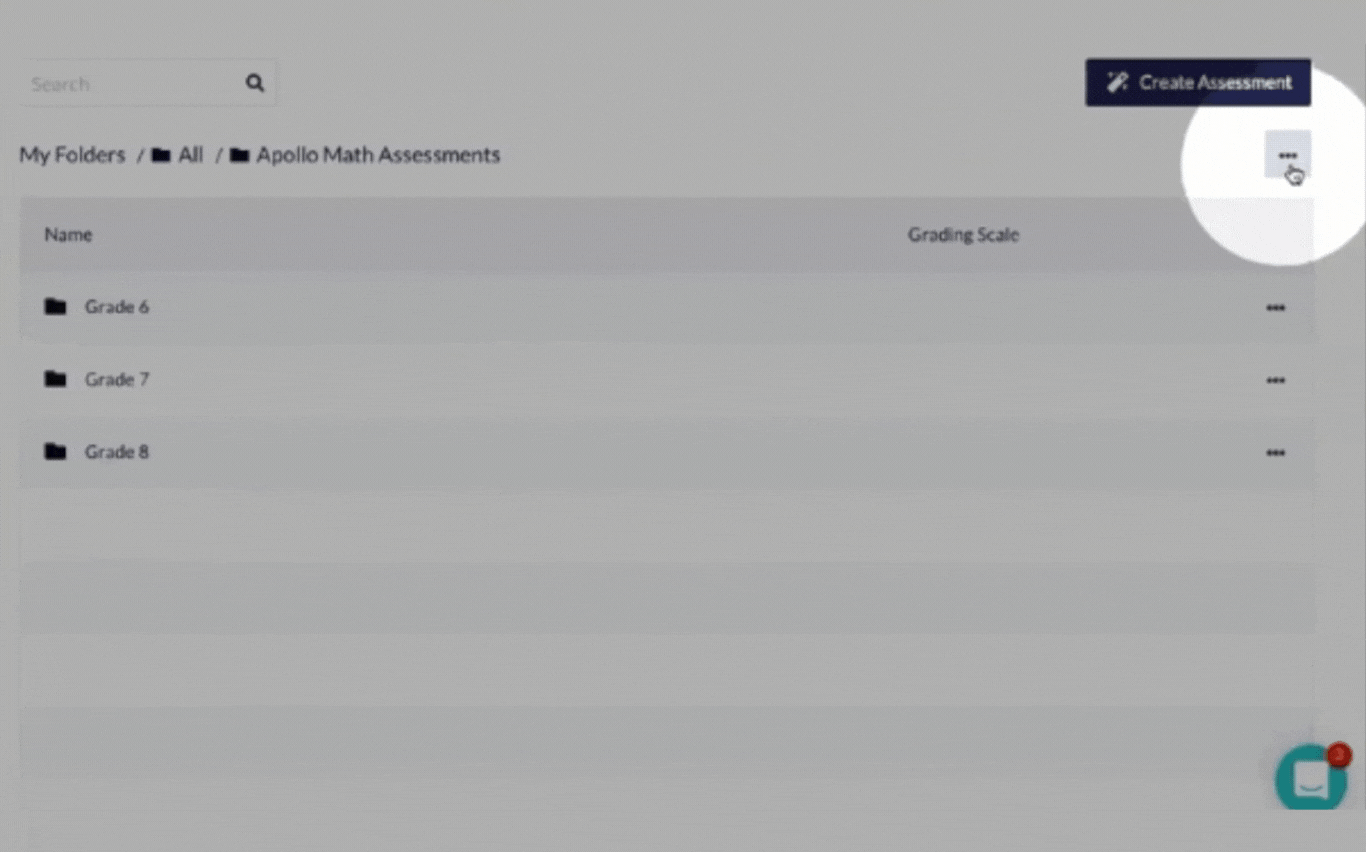
The Tahquitz school community is devoted to professional development and continuous improvement. This is evident in how Candi’s team leverages PLCs (Professional Learning Communities) for common assessment.
The math department focuses on Algebra I, Geometry, and Algebra II in their PLCs. The teachers each write a few questions, and a course lead compiles all questions into an assessment.
Then, Candi organizes the assessments into a shared folder in Otus that all teachers have access to. She added, “which takes all of about 30 seconds because it’s nice and easy and smooth to do!” with a smile. This process ensures all teachers measure learning using the same formative or summative assessment, which is truly collaborative!
The Analysis
After students finish each assessment, the teachers meet again for an 80-minute session. Here, they pull assessment analytics and determine where interventions need to happen. Candi shared, “I love that we can just grab a pie chart in Otus, and say ‘Oh, these six kids didn’t do this well, I need to target these six kids.'”
The Reteaching
Once Candi and her team check the assessment analytics, they reteach groups of students based on the results. Then, students will retest on the same concept. According to Candi, “we pretty much retest every exam.” The approach to reteaching at Tahquitz struck me as unique. All teachers reteach and reassess students. Candi’s team will often split the reteaching, so students get a variety of instruction. This way of providing support also feels focused on student growth rather than focusing on what students “got wrong.”
The ability to reteach and retest with the focus of learning a concept (not just testing it) would have been so beneficial to students like me. If I disengaged for just a minute (probably thinking about a softball game), the entire math lesson was lost on me. Candi’s approach ensures no student gets left behind. She records and posts all her lessons on her YouTube channel so students can rewatch, pause, and relearn difficult concepts.
She also provides reviews for assessments where she includes video support with a parallel problem. Her students love the immediate feedback they receive while working through the review. She giggled and shared, “they even complained when I forgot to turn that on. They said, ‘Mrs. Ballard, we can’t check it! What is the answer?!'”
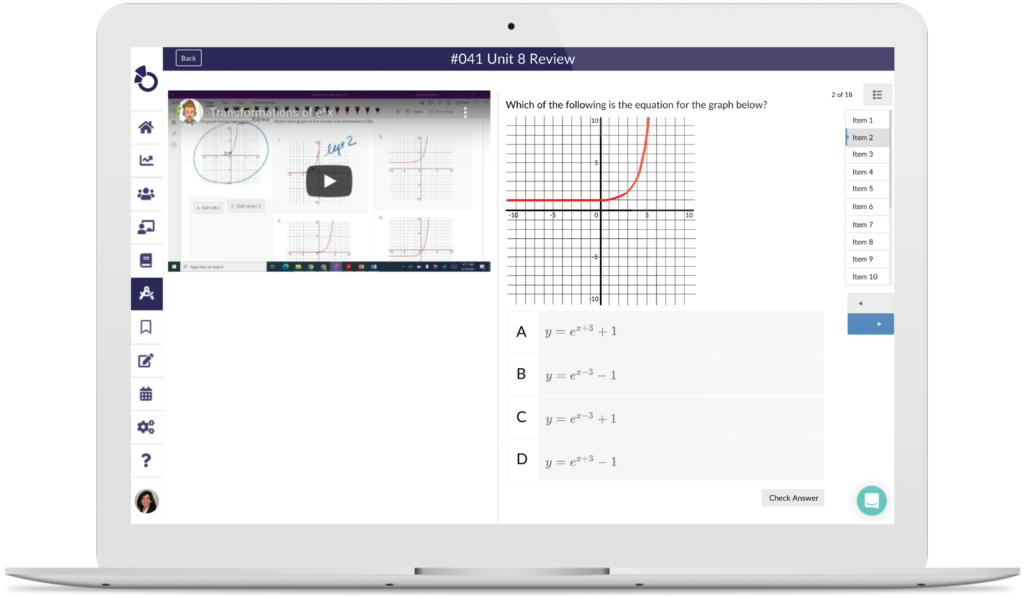
The Time Saver
When I asked Candi if Otus saves her time, her face lit up as she shook her head vigorously up and down. She explained, “with the old system we were using, we just couldn’t get the data out of there. As I was grading a test, I would have a Google Form running for EVERY kid. It was like I was double-grading every question.”
Candi’s team continues to build their common assessments year over year. The ability to auto-grade and easily gather data in Otus saves teachers hours of aggravation. Otus allows Candi and her team to see student progress data in real-time, not just on summative or end-of-the-year assessments. This real-time insight keeps teachers focused on student growth.
The Support
Candi shared that the support and onboarding at Otus was, and continues to be, impressive. Some math teachers even attended live training sessions multiple times. The math department at Tahquitz builds highly technical assessments, and the extra training sessions helped set up teachers for success.
“I have teachers doing some pretty complex things, and they figured it out using the chat feature and searching the Knowledge Base. The training with Otus has been awesome.”
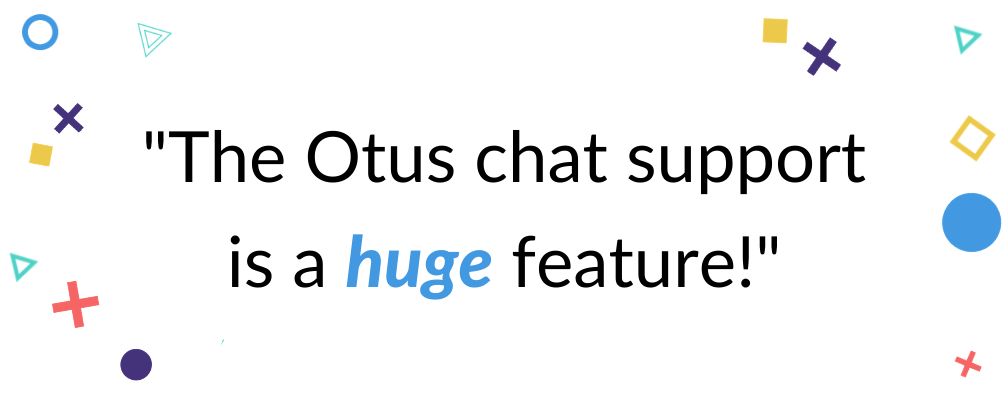
The Clear Vision for Assessment
How Candi and her team approach teaching difficult concepts is a testament to the culture of collaboration and learning at Tahquitz High School and Hemet Unified School District. When I asked Candi what makes her school community special, she simply replied, “I think we just have people who care.”
With a vision and a commitment to continuous improvement, along with staff and a community who care deeply about student growth, we can’t wait to see what Candi, Hemet, and the Tahquitz Math Department accomplish next year.
Otus is one K-12 learning platform to teach, grade, analyze, and plan. Interested in bringing Otus to your school community? Request a demo below, and let’s chat.

